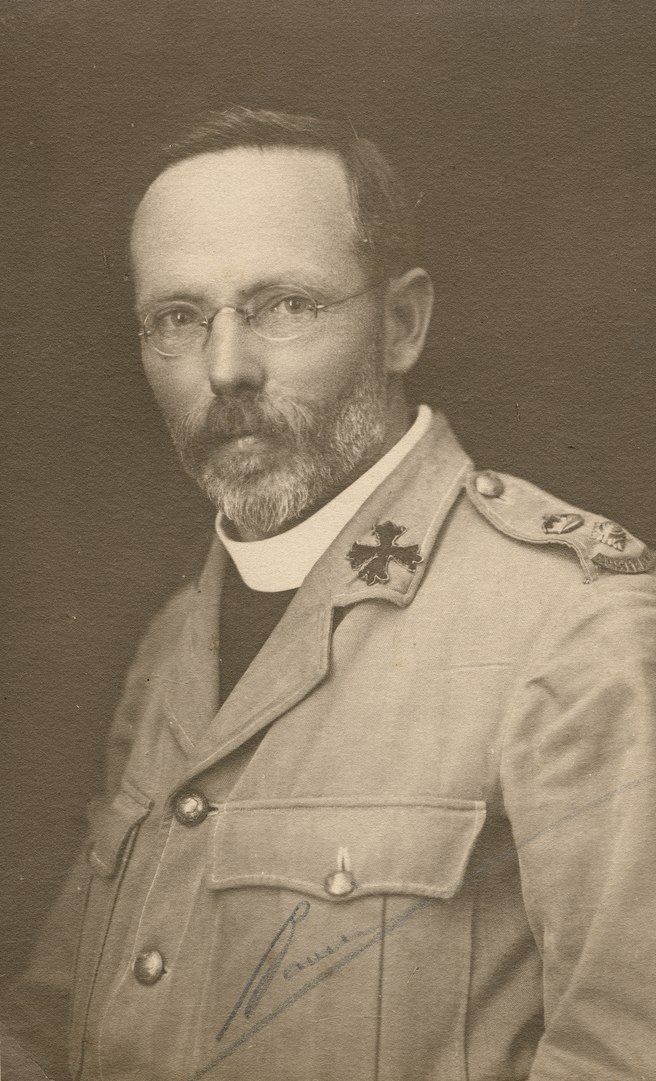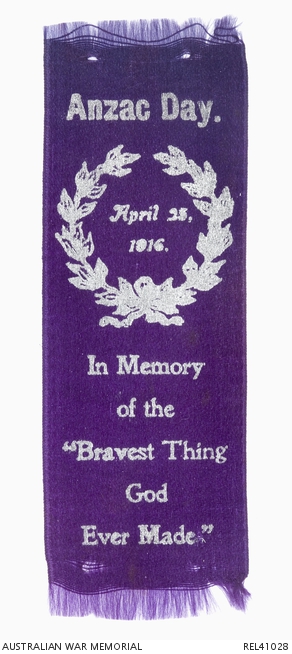David John Garland
4 October 1864 — 11 October 1939
David John Garland (1-50A-9)
Born in Dublin, Ireland, in 1864, David John Garland was a Church of England missionary and chaplain to Western Australia's Boer War contingent before coming to Queensland.
Between 1902 and 1939 he was Archdeacon of North Queensland and rector at St Paul's Church, Charters Towers, then rector at Holy Trinity Church, Wooloongabba, and finally rector at St Barnabas' Church, Red Hill.
His crusading efforts on behalf of the "Bible-in-State Schools League" in the west led him to be invited to organise a similar campaign in Queensland. He then energetically tried to replicate the movement in New Zealand.
With Australia and New Zealand at war with the German Empire, Garland was recalled to Brisbane in 1915 and tasked with providing and coordinating chaplaincy and welfare services at Enoggera Army Base to thousands of fresh recruits.
In the wake of climbing casualty lists and community grief, he urged legislators to establish a framework to enable the nation to publicly honour the service and sacrifice of Australian and New Zealand troops killed in the Gallipoli Peninsula landings of 25 April 1915. This movement culminated in a public meeting on 10 January 1916 at Brisbane's Exhibition Hall which voted to establish the Anzac Day Commemoration Committee of Queensland, with chaplain Lieutenant-Colonel Garland its secretary.
Garland's contribution to Anzac Day tradition was to devise ecumenical or secular rituals for public commemoration of those who died in battle and and to comfort the bereaved. Because his format was non-denominational, everyone could participate, regardless of their faith tradition. The minute's silence provided a space for all Australian's and New Zealanders to demonstrate respect for The Fallen of the Great War.
In 1916 Garland initiated a trust to receive money raised from the sale of silk, lavender-coloured badges embossed with gold leaf with the lion of St Mark and the motto "Their Name Liveth for Evermore". These became the first Anzac Day badges, initially earmarked to pay for the upkeep of soldiers' graves at home and abroad. The appeal eventually helped fund soldier respite hostels and memorials to be established.
On the morning of Anzac Day 1920, the first since his return from war service, Garland visited "Soldiers' Corner" at Toowong Cemetery and found friends and families of the deceased paying their respects. Noting people of all religions were present, he asked all to observe a minutes' silence rather than offer up prayers during an impromptu commemoration service.
Under the guidance of Garland the Anzac Day service at Toowong Cemetery grew in size and significance as did the badge-selling campaign which supported the Lady Mayoress's committee. The campaign's success helped fund the establishment of the "Cross of Sacrifice" and "The Stone of Remembrance" which were erected and unveiled in 1924 near the entrance to Toowong Cemetery immediately adjacent to Canon Garland Place. Anzac Day commemoration's in Brisbane where held here until the Anzac Memorial - Shrine of Remembrance - in Anzac Square, was completed in 1930.
Garland officiated many funerals at Toowong Cemetery from 1910 onwards, including those for a significant number of returned servicemen of World War 1. Throughout his 23 year career on the Anzac Day Commemoration Committee of Queensland, he saw to the development of "Soldiers' Corner" in Portion 10 by the Brisbane General Cemetery Trustees.
Garland, aged 75, died at Red Hill on 11 October 1939. His grave is located at Portion 1, Section 50A, Grave 9, overlooking "Soldiers' Corner".
Canon David John Garland - in uniform by Unknown author, John Oxley Library, State Library of Queensland, Public Domain
Anzac Day 1916 fundraising ribbon, Australian War Memorial, used under the CC BY-NC AU 3.0 licence
Learn more
- Garland, David John (1864–1939) by Australian Dictionary of Biography
- The Architect of ANZAC Day by Canon Garland Memorial Society
- Memorial Ribbons, ANZAC Day by John Oxley Library, State Library of Queensland
- Anzac Day ritual - State Library Queensland

